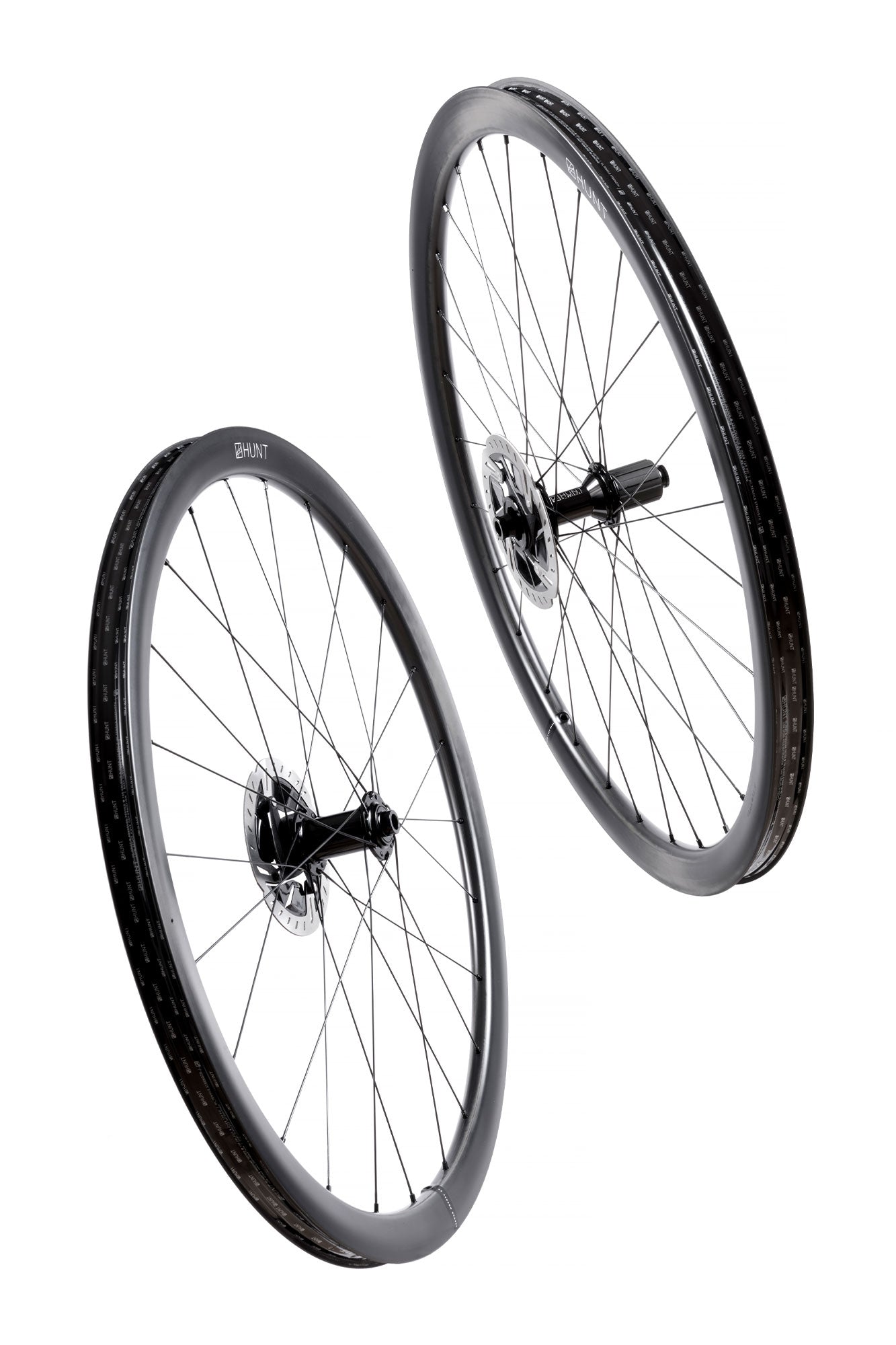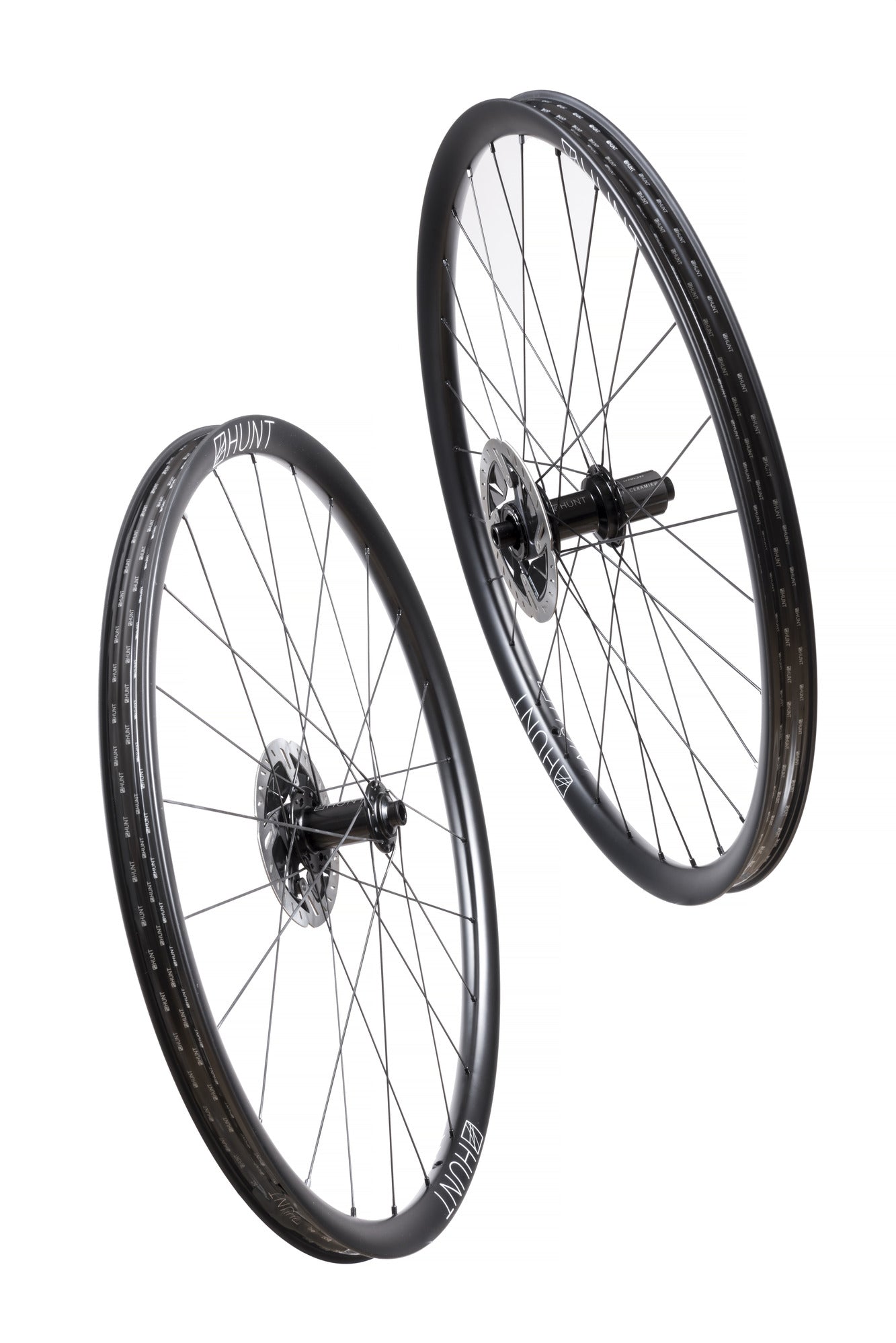The hooked vs hookless debate has been important in wheel engineering for the last few years, particularly with the increased adoption of road tubeless. At HUNT, we’ve had an interesting relationship with this debate as we were one of the first companies to offer a road wheelset using our hookless (then called H_LOCK Wedge) technology back in 2016, with our 55 Carbon Wide Aero in (2016-2017) and 30/50 Carbon Aero Disc (2016-2018). We felt it was a natural step for the company to make, already being a huge advocate for road tubeless since our inception.
From our development of hookless rims, we saw clear weight savings (about 10-15g lighter per rim) for the same profile and dimensions, when compared to hooked. There's also a cost reduction owing to a simpler manufacturing process, which we passed on to the rider. We provided clear guidance that they were to be used with certain tyres and at certain pre-tested pressures.
Ultimately in 2018, we opted to update those wheels to hooked rims because, especially at that time, customers wanted to run a wide range of tires, often not tubeless. Hookless compatible tires were limited. Feedback from customers at the time prioritised tire selection over the rim weight advantages of hookless. At our core, we are all riders and although we know wider tires and tubeless can provide many benefits, we will always represent the needs of the wider cycling community. For riders not ready to make the switch to low-pressure tubeless, we felt it was important to offer them the versatility of hooked rims.









